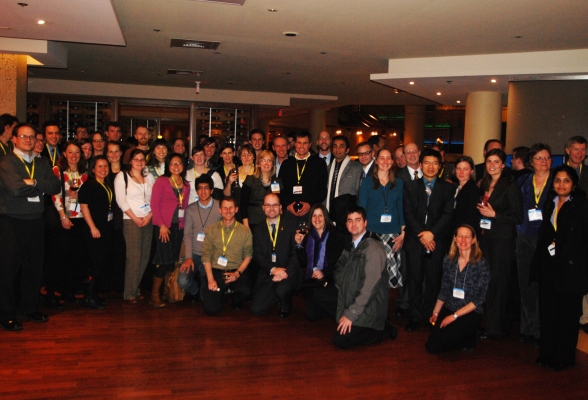Innovative research from OTREC faculty, students on TRB conference agenda

Students and faculty researchers from OTREC universities will present 45 papers at the Transportation Research Board’s annual meeting Jan. 22 to 26 in Washington, D.C.
The papers, to be presented at 37 separate sessions and poster sessions, stem from transportation research at Portland State University, the University of Oregon and Oregon State University. The three universities will send 43 students to the conference.
Alex Bigazzi, a PSU engineering doctoral student, will present his work on topics including congestion and emissions at the conference. Some of that work stems from his master’s thesis, “Roadway Congestion Impacts on Emissions, Air Quality, and Exposure,” with adviser Miguel Figliozzi at PSU. The thesis won this year’s Milton Pikarsky Memorial Award, which will be presented Jan. 21 at the Council of University Transportation Centers awards banquet.
Bigazzi will present another paper, which he wrote with PSU’s Kelly Clifton and Brian Gregor of the Oregon Department of Transportation, that looks at fuel economy for alternative-fuel vehicles in congestion. Titled “Advanced Vehicle Fuel-Speed Curves for Regional Greenhouse Gas Scenario Analysis,” the paper helps Oregon DOT incorporate hybrid, electric and fuel-cell vehicles into its emissions planning model.
While traditional vehicles lose fuel efficiency during congested driving, advanced vehicles don’t suffer from the same effects, according to the paper. Some even do better in congestion than at higher speeds.
“Looking at the conclusions, it’s pretty clear that as more advanced powertrain vehicles are adopted, the negative effects of congestion will be reduced, maybe eliminated or even reversed,” Bigazzi said. “Whatever role congestion mitigation plays currently, it will be less and less of a viable tool for greenhouse gas mitigation.”
Two other papers deal with air quality from transportation. “Bus Stop Air Quality: An Empirical Analysis of Exposure to Particulate Matter at Bus Stop Shelters,” by Adam Moore, Figliozzi and Christopher Monsere, found that bus shelters oriented toward the roadway have higher concentrations of pollution than those oriented away from the road. “An Empirical Study of the Impact of Freeway Traffic on in-Vehicle Exposure to Ultrafine Particulate Matter,” by Bigazzi, Christine Kendrick and Figliozzi, shows that the vehicle shell is the most important factor for in-vehicle exposure, and that closing the air intake vent can reduce exposure considerably.
David Hurwitz of Oregon State University is lead author on a paper that focuses on the so-called “dilemma zone,” the area before an intersection in which a driver must decide whether to brake or continue when presented with a yellow light. The paper, “Evaluation of Effects Associated with Advanced Vehicle Detection Systems on Dilemma-Zone Protection,” showed that advanced sensors can help avoid putting drivers in a position to run red or yellow lights.
“There was a reduction in the worst outcome, red-light running,” Hurwitz said, “and fewer drivers were presented a yellow.” Red-light running actually dropped 70 percent with advanced detection systems.
“We thought it would result in ultimately safer behavior from drivers, and that was confirmed by what we saw,” Hurwitz said.
Click below for a complete list of OTREC-affiliated papers to be presented at the conference by day
Or click here to download a guide to all three days.
General information on the TRB annual meeting is here: http://www.trb.org/AnnualMeeting2012/AnnualMeeting2012.aspx
